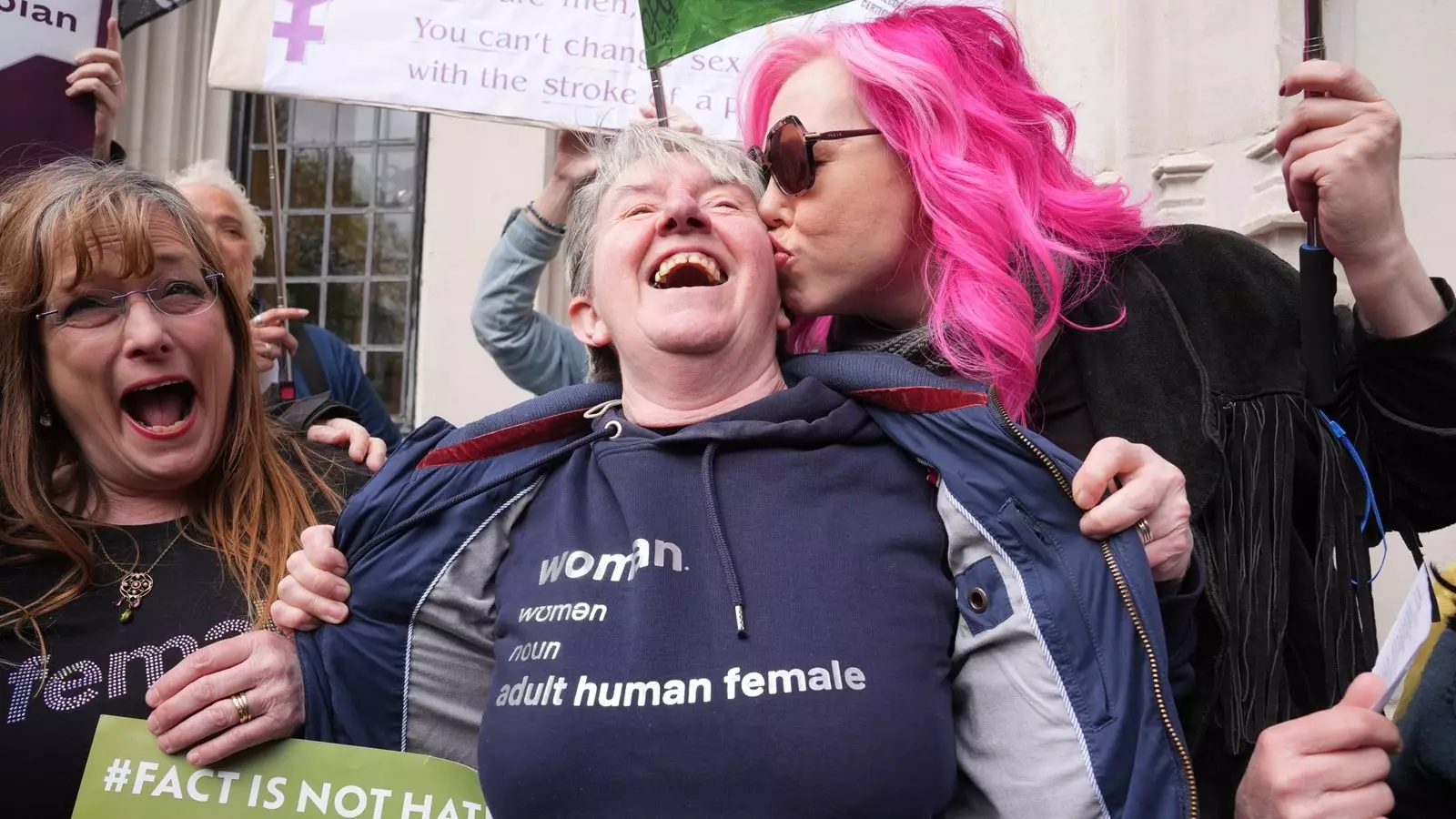The ongoing discourse surrounding gender and identity has morphed into a battleground of emotions, steeped in controversy that leaves no one unscathed. Recent legal proceedings in the United Kingdom have crystallized a schism that threatens to widen the rift between biological determinism and gender identity. Representing a pivotal moment in this saga, the unanimous ruling by five judges declared that the legal definition of a woman is intrinsically linked to biological sex. This stark ruling undermines the recognition of transgender women as women under British law. The implications are profound, resonating across various social sectors and validating the concerns of many who fear the erosion of women’s rights in the name of inclusivity.
This ruling did not appear out of a vacuum; it is grounded in a legislative history steeped in tension. The Equality Act 2010 and the Gender Recognition Act 2004 have long been contentious texts, analyzed under the acid of scrutiny from both sides of the debate. While proponents argue for the expansion of inclusive definitions to modern identities, opponents see this as an affront to the hard-won rights of cisgender women. The case stemmed from the Scottish government’s initiative to include trans women in gender quotas on public boards, igniting an already combustible atmosphere.
Impact on Real Lives
The ramifications of this ruling extend beyond courtroom walls and legal jargon; they ripple through society in tangible and life-altering ways. Advocates for women’s rights hailed the decision as a necessary affirmation of their fight for safe spaces—an interpretation that resonates loudly among those who fear that the inclusion of trans women in these areas undermines the protections afforded to cisgender women. Meanwhile, transgender activists experienced the decision as a grievous assault on their sense of self, echoing sentiments of betrayal and disillusionment.
A poignant instance came from a trans woman who articulated her devastation at the ruling, describing it as an “attack” on her rights. This sentiment casts a long shadow over the ruling, indicating that lives are not mere policies or statistics but deeply felt individual experiences embroiled in law. While the judges may have intended to clarify positions on gender and identity, they inadvertently unleashed a cyclone of emotional responses that could stymie future dialogues on inclusivity and equality.
The Political Fallout
Politically, the ruling is a double-edged sword. Sir Keir Starmer’s government saw it as an affirmation of the principles they wish to uphold, confidently asserting that their support for single-sex spaces remains unchanged. Meanwhile, John Swinney, Scotland’s First Minister, while accepting the verdict, is left to navigate a dicey political landscape where past initiatives to liberalize gender recognition hang like albatrosses around the neck of his government.
The backlash against Nicola Sturgeon’s previous government for attempts to promote more inclusive gender laws now appears insurmountable. As Swinney grapples with reconciling the needs of various voter bases ahead of the looming Holyrood elections, the ruling may serve as a political firebreak rather than a facilitator for progress. This judgment not only crystalizes legal ambiguities but also directly influences the trajectory of future legislation—a daunting prospect for a government already trying to reclaim a narrative muddied by years of contentious gender policies.
A Struggle for Identity
The inherent struggle for identity in this context cannot be understated. The verdict has thrust the conversations about identity, access, and legality to the forefront, demanding a reflection on what it means to be a woman—or even more fundamentally, a person. Conversations surrounding gender have often lacked nuance, ebbing into binary camps of pro and con without room for the complexity of lived experiences.
One must question what it means to stand for equality when the mechanisms intended to safeguard individual rights simultaneously stifle them. The ruling fiercely illuminates these dilemmas, challenging liberal views of inclusivity while underscoring foundational tenets of women’s rights. This interplay ought to fertilizer deep dialogues aiming to accommodate a spectrum of gender identities, but the ruling sets a legislative precedent that may prove to be more isolating than inclusive.
As society contemplates a path forward, it is crucial to extract lessons from this rift. While the courts provide legal clarity, the real work lies in bridging divides, fostering dialogue, and redefining the boundaries of identity in ways that honor the essence of equality for all people.

